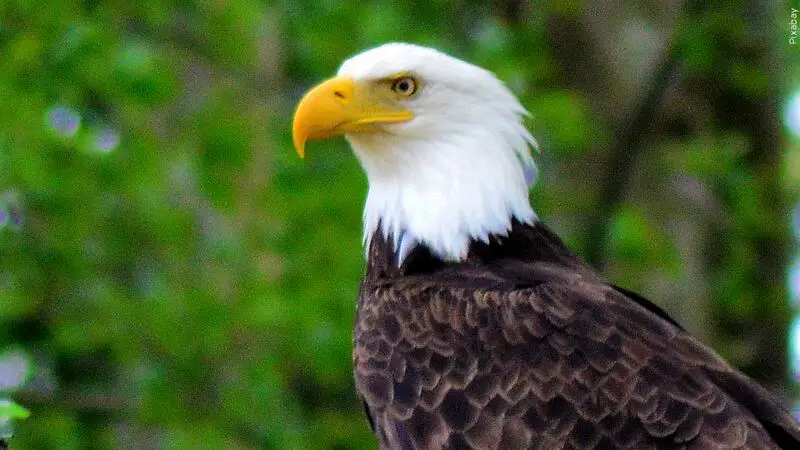As you explore Michigan’s vast wilderness and venture into its rural landscapes, you’ll likely catch glimpses of eagles soaring overhead, their majestic silhouettes a testament to their impressive wingspans and agile flight. With slow, powerful strokes, they ride the wind currents, their feathers glistening in the sunlight. But there’s more to these regal birds than meets the eye. From their carefully constructed nests to their quiet struggles and triumphant recoveries, Michigan’s eagles have stories to tell – and you’re about to uncover three key facts that will give you a deeper appreciation for these magnificent creatures.
Key Takeaways
- Michigan eagles have impressive wingspans of 5.5 to 7.5 feet, allowing them to soar effortlessly and cover vast distances with minimal effort.
- Eagles in Michigan build massive nests in trees or on cliff ledges, often in areas with minimal human disturbance and proximity to water sources.
- Conservation efforts have led to an increase in eagle sightings across Michigan, with sanctuaries and rehabilitation centers playing a vital role in their recovery.
- Michigan eagles tend to avoid areas with high human activity, opting for remote, undisturbed habitats with a mix of trees and water sources.
- The bald eagle population in Michigan has made a remarkable comeback, thanks to collaborative conservation initiatives and the hard work of wildlife experts.
Wingspans of Michigan Eagles

Most Michigan eagles boast impressive wingspans, ranging from 5.5 to 7.5 feet (168-229 cm) from tip to tip.
You’ll notice that these broad wings allow them to soar effortlessly, covering vast distances with minimal effort. The wing feathers, specifically the primary and secondary feathers, are crucial for lift and maneuverability.
The shape and structure of these feathers enable eagles to alter their flight patterns, making sharp turns and quick dives with ease.
When you observe an eagle in flight, you’ll see that it uses a unique wingbeat pattern, characterized by slow, powerful strokes.
This efficient flight style allows them to conserve energy while covering long distances. You may also notice that eagles often use thermals, or rising columns of warm air, to gain altitude and stay aloft for extended periods.
Their impressive wingspans and adaptable flight patterns make them well-suited to their Michigan habitats, where they can be found soaring overhead or perched in trees, scanning for prey.
Eagle Nesting and Habitat
Frequently, Michigan eagles construct their nests, also known as eyries, in trees or on cliff ledges, typically favoring areas with minimal human disturbance and proximity to water sources.
When selecting a nesting site, you’ll often find them opting for tall trees with sturdy branches, as these provide a safe and stable platform for their massive nests. Tree canopies, particularly those with dense foliage, offer eagles shelter from harsh weather conditions and protection from potential predators.
Michigan eagles also tend to avoid areas with high levels of human activity, opting instead for remote, undisturbed habitats.
Forest fragmentation, which occurs when forests are broken up into smaller patches, can actually benefit eagles by providing a mosaic of habitats that can support a diverse range of species.
This diversity is crucial for eagles, as they require a varied diet that includes fish, small mammals, and carrion.
Conservation Success Stories

Several decades of concerted conservation efforts have paid off for Michigan’s eagle population, with numerous success stories highlighting the impact of collaborative initiatives.
You’ve likely noticed the increase in eagle sightings across the state, and that’s no coincidence. Thanks to the hard work of wildlife experts, researchers, and volunteers, eagle sanctuaries have been established to provide a safe haven for these majestic birds.
These protected areas not only safeguard breeding grounds but also facilitate the rehabilitation of injured eagles. Wildlife rehabilitation centers, like the ones operated by the Michigan Department of Natural Resources, play a vital role in nursing eagles back to health before releasing them back into the wild.
You may have heard about the remarkable comeback of bald eagles in Michigan, and it’s a testament to the power of concerted conservation efforts. By working together, Michiganders have created a thriving environment for eagles to flourish, and it’s an achievement worth celebrating.
Frequently Asked Questions: Eagles in Michigan
Do Eagles in Michigan Migrate or Stay Year-Round?
You’re wondering if eagles in Michigan migrate or stay year-round. They typically don’t migrate, but instead, adapt to winter habitats, where they find open water and food sources, allowing them to thrive during harsh winter conditions.
What Do Eagles Primarily Eat in Michigan?
You’ll find that eagles primarily feed on fish in Michigan, with studies showing they consume around 90% fish-based diets. This reliance on fish sources is closely tied to their nesting habits, as they often build nests near waterways to ensure a steady food supply.
Can You Keep an Eagle as a Pet in Michigan?
You cannot keep an eagle as a pet in Michigan, as federal and state pet regulations strictly prohibit eagle ownership for personal possession, requiring special permits and licenses for conservation, research, or educational purposes only.
How Long Do Eagles in Michigan Typically Live?
You think you’ll outlive the majestic bird you’re eyeing as a pet, but ironically, you’ll likely be outlived by it. Eagles in Michigan typically live around 20-30 years in the wild, thriving in their habitats with consistent nesting patterns.
Are Eagles in Michigan Protected by Law?
You should know that eagles in Michigan are indeed protected by law, with federal penalties reaching up to $250,000 and two years’ imprisonment, as well as state fines of up to $10,000 and 90 days’ imprisonment.
Conclusion
As you gaze up at Michigan’s majestic eagles, remember that their soaring success is a testament to the power of conservation. Like a strong wingbeat, concerted efforts have lifted these birds from the brink of extinction, allowing them to thrive in their natural habitats. With continued support, these eagles will remain a symbol of hope, their wings spreading wide to shelter future generations.













